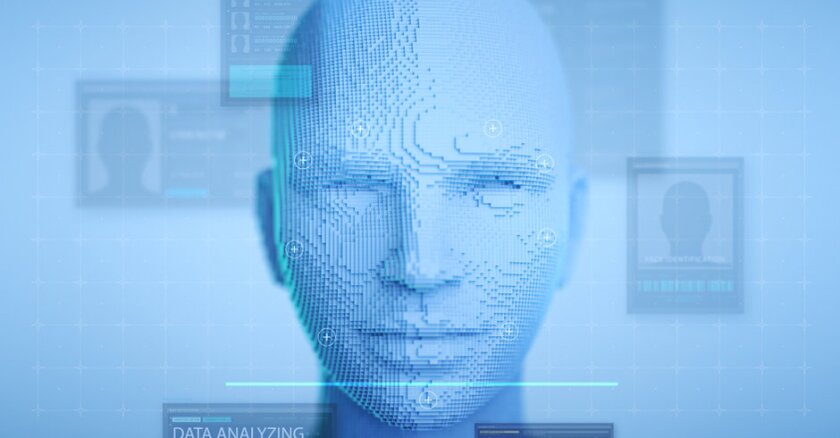Chief James White said Porcha Woodruff's arrest "emanated from, candidly and unfortunately, a poor investigation. The policy changes that I'm recommending to the Board of Police Commissioners ... will ensure that something like this will never happen again."
Woodruff, 32, said she was arrested in her Detroit home at about 7:50 a.m. Feb. 16 while preparing her children for school. She was accused of a robbery and carjacking reported on Jan. 29.
After the victim reported he'd been robbed at gunpoint, the case was assigned to Officer LaShauntia Oliver of the DPD Commercial Auto Theft Unit, according to the suit.
Oliver learned a cellphone stolen in the incident had been returned to a BP station on Van Dyke. An investigative team extracted video from the gas station showing the woman who had returned it; a still image lifted from the footage was entered into the Police Department's facial recognition software, according to the lawsuit.
The lawsuit asserts the officer "deliberately omitted facts" when she submitted a warrant to Wayne County prosecutors seeking carjacking and robbery charges. Prosecutors charged Woodruff, but the case was dismissed during her March 6 preliminary examination because there wasn't enough evidence to bind the case over for trial.
"In the warrant affidavit, Detective Oliver omitted the fact that (Woodruff's) facial recognition was eight years old, and (Woodruff's) recent driver's license photo was available," the suit said.
On Wednesday, White said the gas station video image "was submitted in accordance with our policy with facial recognition, because it was one of those violent felonies. The technology yielded an investigative lead, which is exactly what it was supposed to do.
"In fact, in this instance it produced 73 possibilities of who the suspect was. Now, the human interaction from that requires that lead is exhausted. ... You do a number of things to ensure that the investigative lead is possibly your suspect. It's the launch of the investigative point. It does not appear that that occurred."
But, the chief said, the investigator involved in the case violated department policy."A photo lineup was presented to the victim of the carjacking, which included Miss Woodruff. The problem with that is you cannot use a photo lineup inclusive of a facial recognition photo. ... The reason for that is facial recognition is picking up measurements on a face, identifying who this could be," White said. "... DPD policies clearly state that members are to avoid the use of photos that so closely resemble the suspect that a person familiar with the suspect might find it difficult to distinguish the suspect from other individuals presented in the lineup."
He added: "You don't want to put the suspect's twin in a lineup ... because if you don't know the person, you're going to pick them out."
Detroit police are supposed to go beyond photo lineup IDs alone, he said.
He said he is instituting multiple reforms, including "no member will be allowed to use facial-recognition derived images in a photographic lineup. Period." And besides updates to how pictures are presented, White said, "a supervisor is to ensure that there is independent basis for believing that the suspect who was pictured in the photo lineup ... has the means, ability and opportunity to commit the crime."
Assistant Chief David LeValley said the department also has reviewed all of its facial recognition arrests in the last year and a half.
"In all of those cases, except for the case that we're referring to today, there was independent evidence outside of the facial recognition photograph that led the officers to believe there was enough probable cause for an arrest," he said.
Meanwhile, LeValley added, the department is updating its policy to strengthen reviews and audits of facial recognition-related arrests.
"Once (officers) have ... two independent captain-level reviews, they can then submit a warrant to the prosecutor," he said. "So that's going to be a recommendation that we're making to the Board of Police Commissioners, which will strengthen the review before we make an arrest, before we take anybody into custody, where there was facial recognition involved in the case."
White said his team is "looking at this and we take this very seriously. And we want to ensure ... nothing like this ever happens again. It's particularly difficult when you're talking about someone who was eight months pregnant, so we empathize with that. We recognize we have to do better and there will be accountability on this mistake."
The Detroit City Council approved DPD's use of the technology in September 2020, but its use of facial recognition software has been marked by controversy. Opponents claimed the technology falsely flags an inordinate number of Black people.
White rejected claims that Woodruff's arrest followed "a fraudulent facial recognition discovery."
"That is just incorrect," he said. "What this is is very, very poor investigative work that led to a number of inappropriate decisions being made along the lines of the investigation."
© 2023 The Detroit News. Distributed by Tribune Content Agency, LLC.














